“As the community manager, you’re hosting a party. At first you have to welcome everyone, take their jackets, and offer them food or a drink.
But once more guests start to arrive, you can make connections amongst guests who have things in common, and you can slowly pull back … to just being in the background.”
Love it.
It’s also worth noting that the party may look a little different based on the types of community management out there. So, let’s review the top six together.
Table of Contents
The SPACES Model
You can look at community management in many ways, but the easiest one is through the SPACES model.
No need to take my word for it because the experts agree that this is a pretty solid foundation.
“The SPACES model is a fantastic framework to help brands determine how the community can help the business with a specific focus ...” says Christina Garnett, founder and fractional CCO at Pocket CCO.
“... Especially for non-community builders. It helps provide clarity about what the business wants the community to provide,” she continues.

The SPACES model, proposed by CMX, organizes community management strategies based on their primary function and the focus of the community in question.
Sowyrda adds, “The SPACES model makes sense in the fact that you really do have to focus on one thing at a time. It does a good job of highlighting the different ways your company can use a community.”
The acronym “SPACES” represents six distinct community management categories: Support, Product, Acquisition, Contribution, Engagement, and Success.
Now, onto the specifics.
Types of Community Management
Enter: the specifics. Here are the six types of community management to consider based on the SPACES model.
Pro tip: As you start building your community management strategy, Sowyrda recommends focusing on one (or two) of the elements below and mastering those before expanding your approach.
1. Support
Support communities empower members to help each other out by answering questions or solving problems. These communities can be organized as an online forum or discussion board, where members can ask and answer questions.
I’d also recommend offering other support resources like knowledge bases and FAQs, so people can find answers quickly on their own.
Benefits:
- Reduced customer support costs
- Lower workload for your customer service teams
- Quicker resolution of common issues
- A greater sense of community among members
Best for: Brands with in-depth product lines, like software or electronics, where users can benefit from sharing tips, tricks, and troubleshooting advice.
Example:Apple Support Community
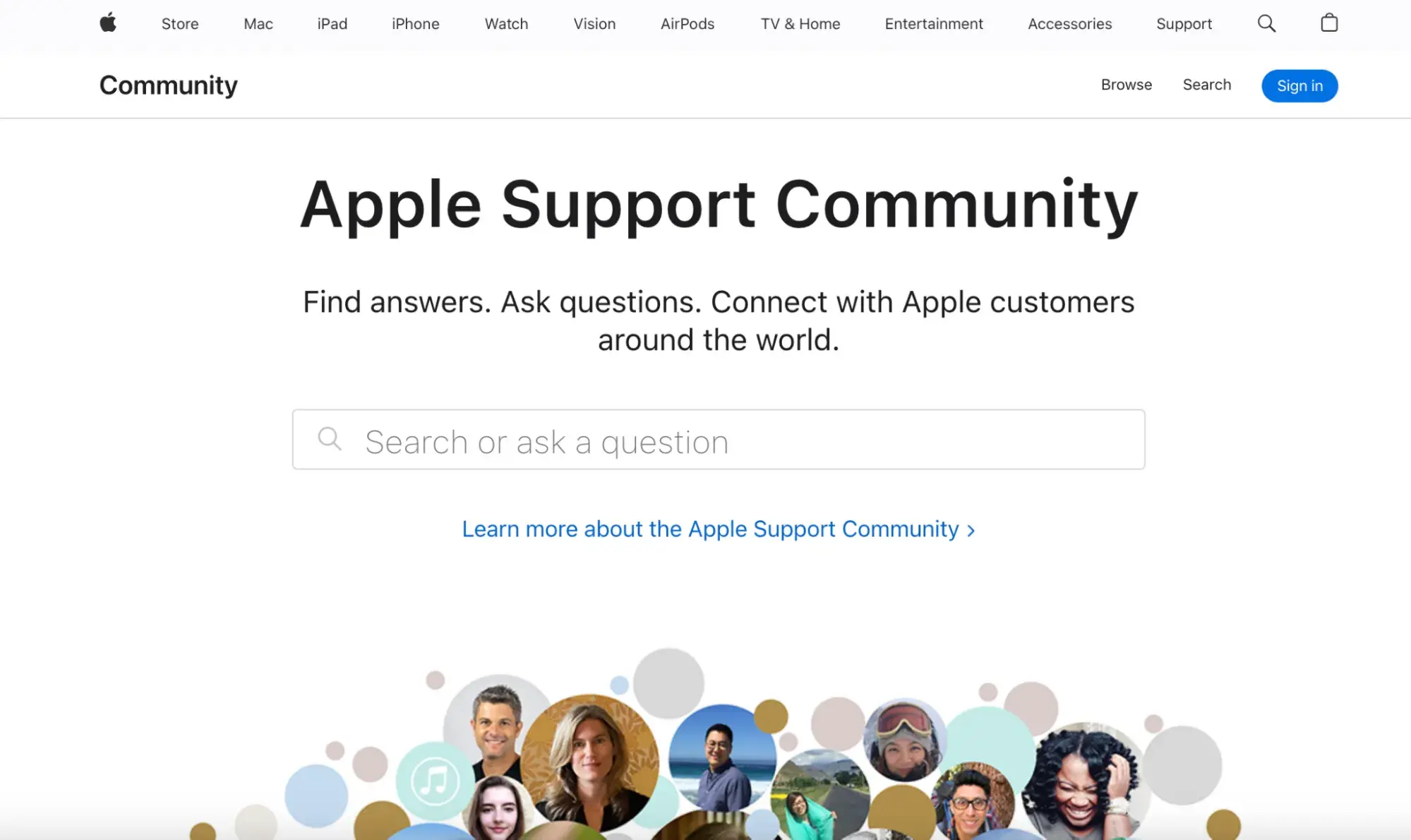
What I like about Apple’s Support Community: Honestly, the simplicity of search is really appealing here. You can type in a keyword or ask a question and connect with Apple customers around the world on related support topics.
2. Product (Ideation, Innovation, and Feedback)
Product communities allow you to create a safe space for your customers to provide feedback on your products and services. They can share thoughts on how to improve your products or ideas for innovation.
This way, you’re basically inviting members to participate directly in your product growth and development process.
For example, at HubSpot, Sowyrda explains, “We have communities of product (discussing HubSpot’s products) and communities of practice which are spaces to discuss professional topics.”
Benefits:
- Improved product-market fit
- Continuous product improvement based on user feedback
- Higher user satisfaction
- Sense of ownership and loyalty to your brand
Best for: Consumer-oriented software-as-a-service (SaaS) companies where user feedback is crucial for iterative product development.
Example:LEGO Ideas
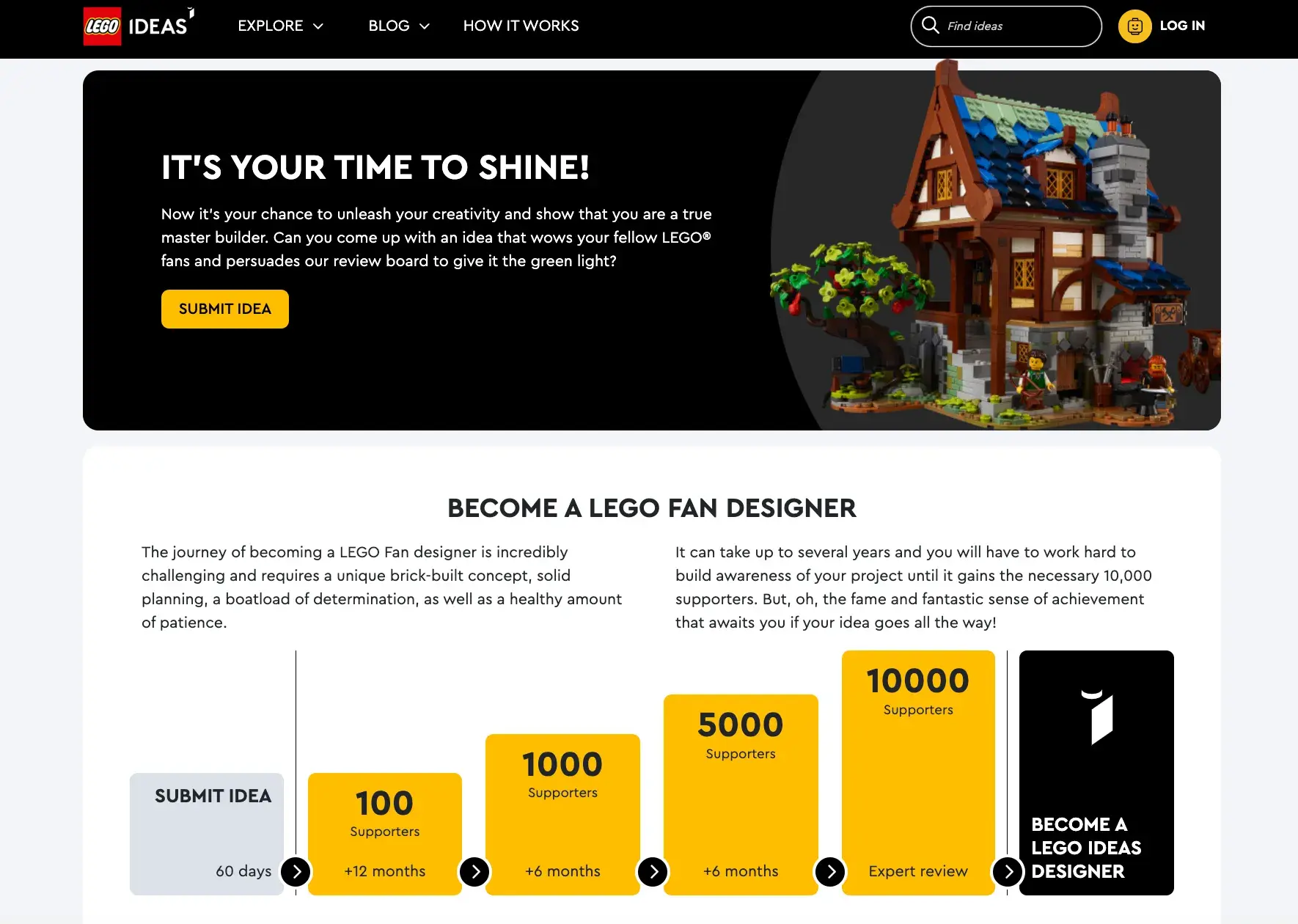
What I like about LEGO Ideas: They make it super easy (and fun) for LEGO lovers to submit ideas for new designs. Plus, people can see what winning ideas look like from their fellow customers.
3. Acquisition and Advocacy
Acquisition and advocacy communities are typically networks of ambassadors or advocates who help build awareness around your brand.
Members promote your products and services through word of mouth, affiliate programs, and social media.
Benefits:
- Increased brand awareness
- Lower customer acquisition costs
- Higher conversion rates
Best for: Almost every type of company can benefit from acquisition and advocacy communities, but it’s particularly effective for startups and newly-established brands.
Example:Sephora Squad

What I like about Sephora Squad: The community isn’t officially live until August 2024, but Sephora is already creating some buzz. If you can get people excited before launch, you’re already one step ahead of your competitors.
4. Content and Contribution
Content and contribution communities encourage users to share content and ideas or participate in collaborative projects.
Contributions can range from guest blog posts and media submissions to involvement in open-source software projects on your website.
Dedicated team members typically curate the user-generated content to ensure it’s appropriate, meets quality standards, and aligns with your community guidelines.
Benefits:
- Increased member engagement
- A strong sense of ownership among contributors
- More valuable content for the entire community
Best for: Media companies, creative industries, and open-source projects that thrive from UGC.
Example:Adobe Lightroom
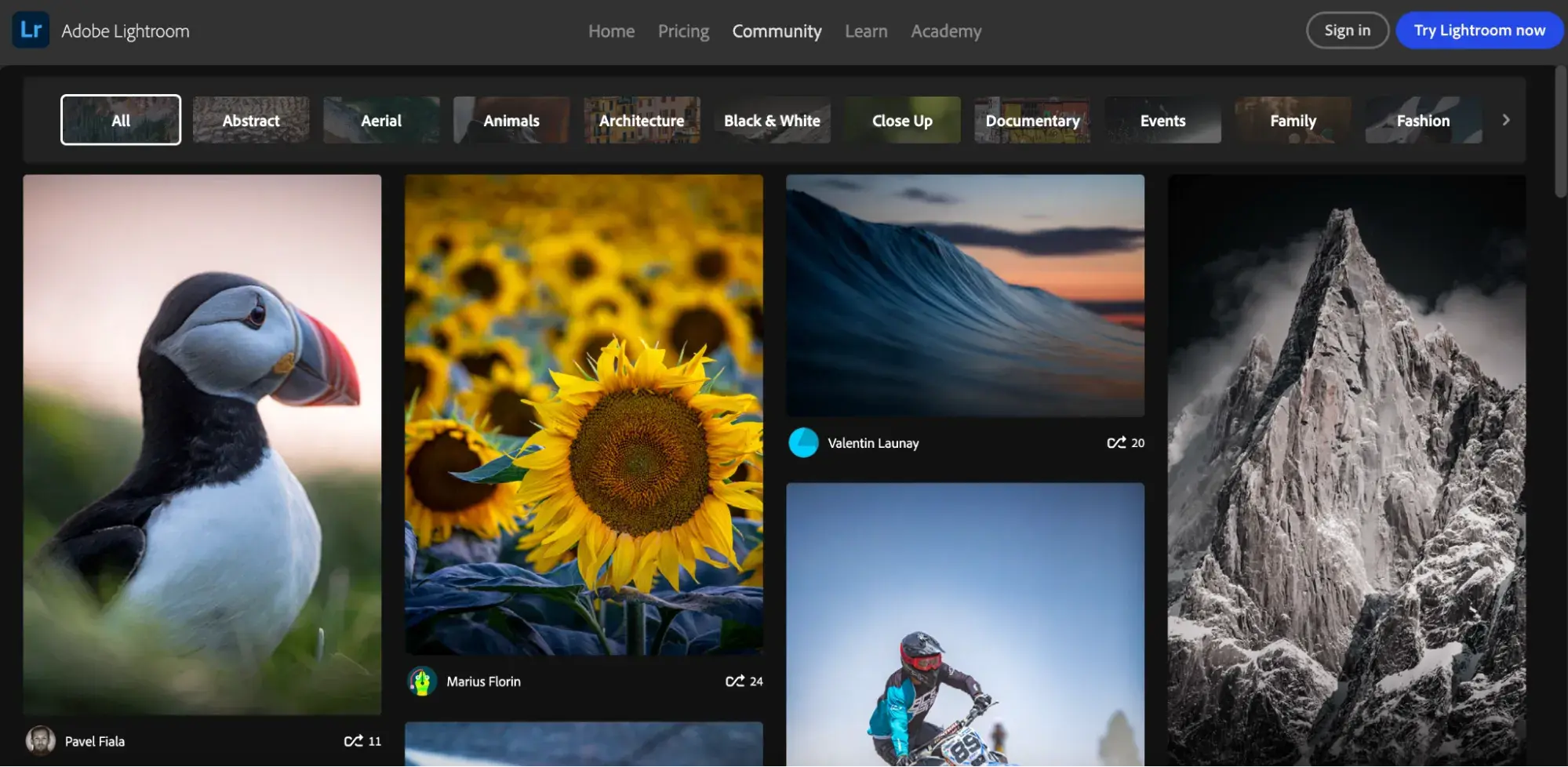
What I like about Adobe Lightroom Community: I got this example from one of my best photog friends, and it really is great. You can see exactly how the contributor edited their photo in Lightroom — from start to finish.
5. Engagement (External and Internal)
There are two types of engagement communities: external and internal.
Internal engagement communities bring together a brand’s internal contributors. These communities serve as a hub to share internal news and resources with employees, partners, vendors, or suppliers.
These communities can also help align staff members with the company’s goals and values, improve morale and retention, and enhance collaboration.
By comparison, external engagement communities connect individuals who have a shared interest related to a company or brand. Like if I ran a cookie company and created a community for baking enthusiasts.
Benefits:
- External engagement opportunities
- A sense of belonging and stronger connections with your brand
- Organic increases in brand awareness via word-of-mouth
Best for:
- Internal: Beneficial for larger organizations with many departments or teams spread across different regions or countries.
- External: Great for lifestyle brands or companies with strong brand identities based on lifestyle or values (e.g., fitness or beauty).
Examples:
- Internal: HubSpot’s Slack community, which is a platform for employees to connect, share ideas, and ask questions.
- External:Nike Run Club
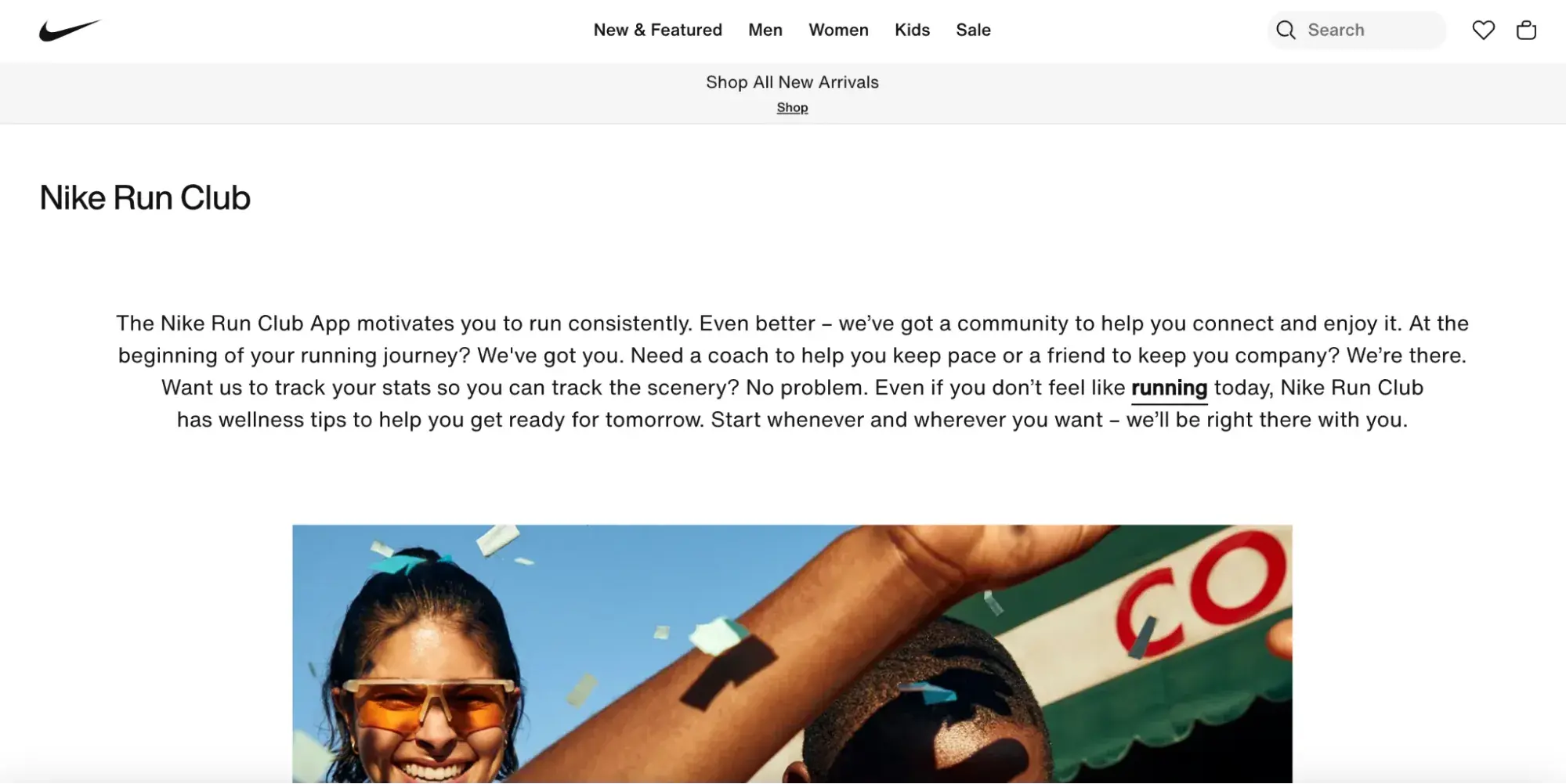
What I like about Nike Run Club: This is a smart play for Nike. They emphasize physical activity through their products, and this club allows running-enthusiasts to connect with each other and the Nike brand.
6. Success Community Engagement Management
Success communities are designed to help customers use your product or service, well, successfully. They allow members to achieve desired outcomes by sharing best practices, user experiences, and success stories.
Benefits:
- Greater customer satisfaction
- Reduced churn rate
- Valuable testimonials to attract new members
Best for: SaaS, business-to-business (B2B), and service-oriented businesses where product success is closely tied to continued product use.
Example: Noom Circles

What I like about Noom Circles: I love how personalized you can get with Noom Circles. You’re matched with communities that reflect your interests (e.g., food, exercise, hobbies, etc.) and the goals you’re working toward.
Community Management Strategies
The strategies you use to analyze your community performance will vary based on the type of community you’re building.
Here are some metrics to consider for each:
- Support: Conversation engagement (e.g., posts, comments), quantity of questions asked and answered, reduced customer support calls
- Product: New product ideas, new feature adoption, customer satisfaction
- Acquisition: Conversion rate, new leads/signups, new customers
- Content: Users creating UGC, new and active users, conversation engagement (e.g., posts, comments)
- Engagement: Conversation engagement (e.g., posts, comments), new member signups, event attendees
- Success: Net Promoter Score (NPS), customer retention, customer satisfaction
Want more? Get the full scoop on community management metrics.
Creating SPACES for Your Communities
Hopefully, this provided some clarity about the different types of communities and what they’re best for. If you’re still having trouble choosing one for your brand, I say start with your audience.
The best communities come to life when your goals align with their needs.
Community Management


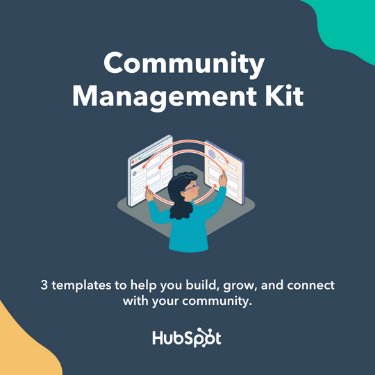




![Experts Share Top Tips for Community Management [+ Examples]](https://53.fs1.hubspotusercontent-na1.net/hubfs/53/ft-community.webp)





